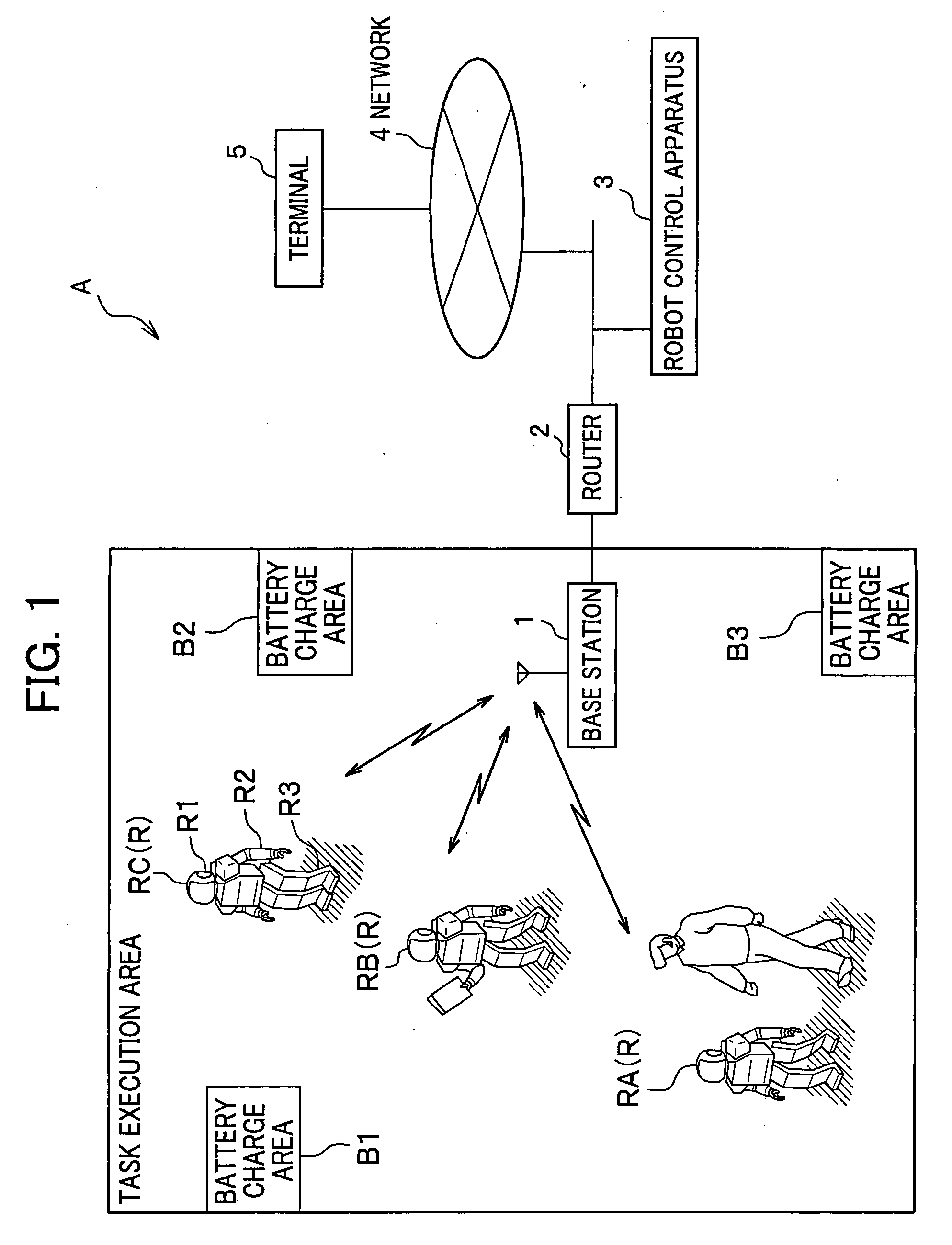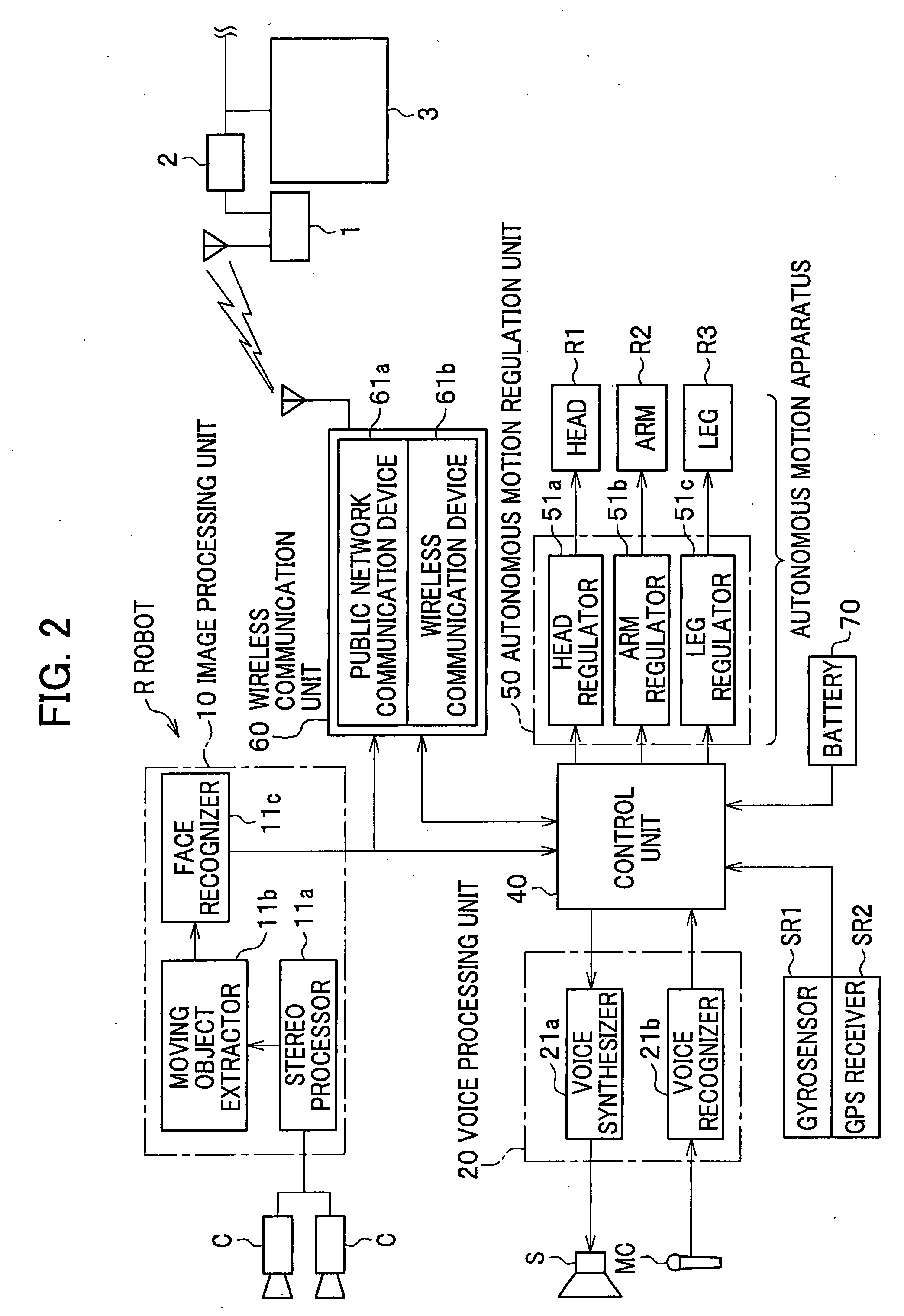Robot Control Apparatus
a robot control and robot technology, applied in the direction of electric programme control, program control, instruments, etc., can solve the problems of difficult to predict the amount of battery expense (battery consumption) to be consumed by the mobile robot when a mobile robot performs the task, and achieve the effect of effectively performing a plurality of tasks
- Summary
- Abstract
- Description
- Claims
- Application Information
AI Technical Summary
Benefits of technology
Problems solved by technology
Method used
Image
Examples
Embodiment Construction
[0029]Preferred embodiment of the present invention will be described in detail with reference made to the accompanying drawings where appropriate. FIG. 1 shows a system configuration of a robot control system according to one preferred embodiment of the present invention.
Configuration of Robot Control System
[0030]Referring now to FIG. 1, a robot control system which incorporates a robot control apparatus according to one preferred embodiment of the present invention will be described in detail.
[0031]As shown in FIG. 1, the robot control system A includes a plurality of robots RA, RB and RC which are capable of moving. Note that when an unspecified robot or robots are generally referred to, the robot(s) will be designated simply by “R”. Each robot R is configured to carry out a task (or a series of tasks) in accordance with a task executive plan (task schedule) which has been organized for each robot R and stored in a robot control apparatus 3. The robot control system A is implemen...
PUM
 Login to View More
Login to View More Abstract
Description
Claims
Application Information
 Login to View More
Login to View More - R&D
- Intellectual Property
- Life Sciences
- Materials
- Tech Scout
- Unparalleled Data Quality
- Higher Quality Content
- 60% Fewer Hallucinations
Browse by: Latest US Patents, China's latest patents, Technical Efficacy Thesaurus, Application Domain, Technology Topic, Popular Technical Reports.
© 2025 PatSnap. All rights reserved.Legal|Privacy policy|Modern Slavery Act Transparency Statement|Sitemap|About US| Contact US: help@patsnap.com



